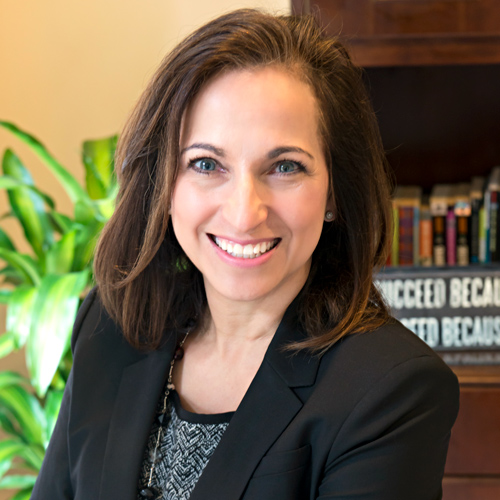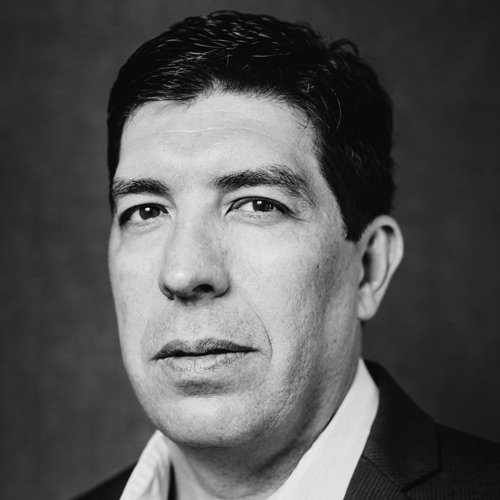On July 1, 1943, smack in the middle of World War II, Southwestern Medical College’s first 277 students began their first classes in the former Alex W. Spence Junior High School, a temporary base of operations until the school could find something more permanent in Dallas. In the years since, the institution—now known as The University of Texas Southwestern Medical Center—has expanded and evolved dramatically, most recently thanks to the work of vice president of facilities management Juan M. Guerra Jr. As the academic medical center prepares to celebrate its seventy-fifth year, he’s continuing to transform its campus rapidly with a variety of new structures while also helping expand its reach beyond the classroom.
Before joining UT Southwestern in February 2016, Guerra had been the associate vice president for facilities at Texas State University, in San Marcos, since 2010. He was responsible for eight million square feet of campus facilities, 250 buildings, and more than $1.3 billion in capital improvements, and he says his prior two decades in the US Navy prepared him for the job perfectly. “It was a direct correlation,” he says, referring to his time in the Civil Engineer Corps. “I was managing maintenance and operations on military installations, both for the Navy and Marine Corps. Shifting over to a college campus was an easy transition.”
At UT Southwestern, Guerra has taken the lead managing eleven million square feet spread over multiple campuses, a $64 million annual operating budget, a $35 million annual capital- renewal program, and a $1.1 billion, six-year major construction program. He has hit the ground running, having already supervised the construction of two new campus buildings, including a new cancer treatment center with a unique design. It contains seven treatment rooms surrounded by three- to six-foot- thick concrete walls to protect people outside the rooms from radiation.
“Each treatment room has a front entrance for patients and a back entrance for the support staff and equipment and materials,” Guerra says. “Rather than have everything in the rooms, they are built into a utility quarter that holds all the equipment.
The head of UT Southwestern’s Department of Radiation Oncology was actively involved with the design. “He told us what he wanted, then it was up to the design team and structural engineers to make it happen while making the most of the construction dollars we had,” Guerra says.
The new cancer treatment center took two years to build and opened last April, and early feedback has been positive. “It’s very patient-friendly,” Guerra says. “Patients and their families are now walking into an area with more color and art, which helps improve their experience.”
Additionally, last June, Guerra oversaw the opening of a three-story, 110,000-squarefoot multispecialty outpatient facility in Fort Worth. “We turned the building over to our faculty physicians, who will have their practices there,” Guerra says.
This May, the school’s main campus will add a nine-story, 310,000-square-foot building, 150,000 square feet of which will be dedicated to various outpatient clinics while the rest is devoted to academic space and a simulation center. And, as that building opens, a fourth notable project, the 650,000-square-foot expansion of the medical center’s main hospital, the William P. Clements Jr. University Hospital, will get under way. The expansion will add 292 beds and be ready by 2020. “The original hospital building has a W form, which allows nurses to have quicker access to patients’ rooms,” Guerra says. “We will follow the same theme. We’re building two rectangular block structures that come together at the base of the V to form a common core.”
As Guerra has managed these construction projects, he has also led an expansion of his department’s off-campus reach. In fact, the department is split into two groups, one managing the two on-campus hospitals and the other supporting the university’s health clinics, twelve of which are spread around town. “We’re helping take the weight off doctors’ shoulders in those off-campus clinics and providing support so that they can better help the community,” Guerra says.
This support will roll out gradually. To absorb the added work without hiring more full-time staff, Guerra chose a third-party service provider to handle maintenance work at the first two off-campus clinics, which are university-owned. “Rather than have a hodgepodge of in-house staff take care of this, we put it under one comprehensive contract,” Guerra says. “Eventually, we’ll expand that contract to take care of the off-campus clinics in leased buildings. We will start taking on a more expanded role in quality assurance.”
The bottom line Guerra and his team work toward with every project is staying true to the academic medical center’s mission to improve healthcare in the community, the nation, and the world through education, innovation, and compassion. “I have to consider what all the different end users are telling us,” he says. “I take patient input into account in how to design exam and procedure rooms and create movement in the building. We’re making sure that as a patient, your experience is positive.”
Student input, meanwhile, keeps Guerra focused on filling classrooms, clinics, and other facilities with the latest technology to make sure UT Southwestern’s graduates are prepared when they enter the real world. “With the healthcare process so deep in technology, our academic mission has to be focused on showing students how to use the technology,” he says.
Guerra is excited by the robust future of UT Southwestern and his own department. It was the main factor that drew him to the job. “When this position came open, I talked to my predecessor about the responsibilities and what he saw as the challenges and opportunities,” he says. “When I reviewed the strategic plan for campus, I was intrigued by how much growth was projected over the next ten years.”
Guerra also liked the idea that his work would impact the community. He is active in his church and cares about helping people, whether at home or at work, and his ongoing efforts at UT Southwestern will no doubt play a part in the institution’s next 75 years. “I think about what I will leave here for the people who follow me in this department,” he says. “We need to anticipate what healthcare will look like. Where should we position UT Southwestern to make sure it’s vibrant in the future? I’m helping shape that vision today.”

